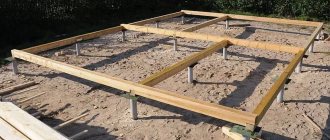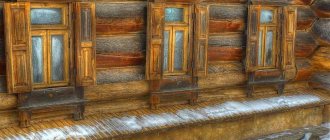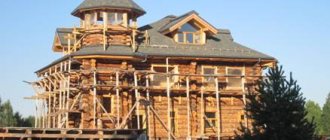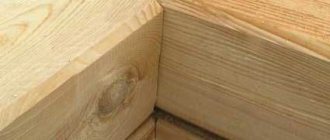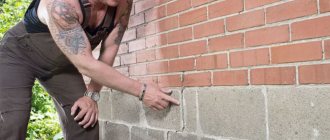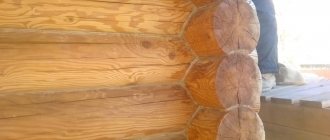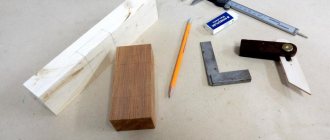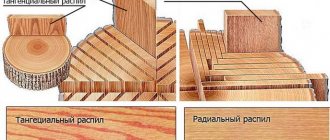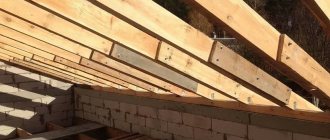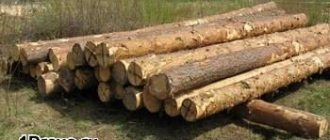A log house is not only a tribute to centuries-old traditions, but also a beautiful, modern, environmentally friendly structure. offers the construction of hand-built houses and baths of any size and complexity.
The most popular log cutting technologies can be classified into two large groups:
- with the presence of a residue (protrusion);
- without a trace.
In turn, each of them is divided into certain varieties, which have both advantages and some disadvantages. Therefore, in order to choose the optimal method for building a residential building, cottage or bathhouse, it is better to familiarize yourself with the specifics of each of the most common cutting methods.
The first type is most often represented by the “in the bowl” or “in the oblo” varieties, and the second – “in the paw”. They are worth considering in more detail, because not only the appearance of the structure, but also its operational characteristics depends on the type of corner connection of logs chosen by the customer. First of all, this concerns the presence or absence of cracks, the behavior of log structures during the process of shrinkage and shrinkage.
The presence of remains at the corners of the building forms protruding ends, which serve as a kind of decor for the house. In addition, they improve the thermal insulation qualities of the building and serve as additional protection from the wind. Among the disadvantages of this option is the reduction in the length of the logs due to the corner protrusions. This reduces the actual dimensions of the interior spaces. Therefore, it is necessary to take into account that when using identical six-meter logs, the finished area will be larger for the house that was built using the method without residue.
"To the region"
This method of cutting is considered one of the oldest. It is characterized by simplicity, the use of a minimum of complex structures and grooves. The log structure is placed in special cup-shaped recesses, which are cut along the edges. That is why this method is also called “chopping into a bowl.”
The main advantages of this method:
- high speed of operation due to the use of simple designs;
- strength of the structure;
- attractive appearance.
However, during operation, wooden “bowls” can become saturated with moisture and change their shape due to drying of the wood. Therefore, buildings built using the “blob” method require regular maintenance, caulking, and control of rot.
Interventional insulation
To fill bowls and grooves when assembling log houses, various inter-crown seals can be used. The most famous are jute and Klimalan. Recently, insulation made from polyester fibers “AVATERM” appeared on the market. This is an analogue of the Finnish extra-class insulation “PP-TERMO”.
- Jute
is a tradition. This is an environmentally friendly product with good spring properties. It has been a leader in the insulation market for a very long time, but its service life is a maximum of 15-20 years. Then it cakes and stops performing its functions. Our company does not use it. - Now “KLIMALAN”
is the No. 1 insulation material for log houses all over the world. It is made of pure sheep wool and comes with a 100-year manufacturer's warranty. When dismantling a house or bathhouse made of logs, this insulation can be reused. It does not get wet, does not rot, and quickly returns to its original shape when it shrinks and naturally increases the inter-crown gaps. Imagine natural sheep wool! What are its advantages? These same qualities are inherent in “CLIMALAN”. Add legendary German meticulousness to every detail and get the perfect insulation! - “AVATERM”
is a polyester fiber insulation that appeared relatively recently in Russia and has caused a lot of talk. Synthetic insulation “did not please” connoisseurs of all things natural. Fans of this material refer to the many years of experience of the Finns, who use polyester fibers to insulate their homes. This material does not rot, is not afraid of moisture and does not wrinkle over time. The only controversial point concerns “breathing” - synthetics do not allow air to pass through, but this is not critical for log houses and bathhouses, where all the walls “breathe”.
Cutting "in the tail"
This method of manual cutting is the same bowl, but improved. Corner structures have a more complex configuration - the presence of an additional spike called a fat tail. It allows you to form a stronger and tighter connection. In this case, the recess (bowl) can be oriented both up (traditionally) and down.
The type of log cutting “in the tail” makes it possible to avoid the wind blowing through the walls of the house. A home built in this way is warmer, more comfortable, and has less heat loss.
Heat loss during winter operation of the house for each type of log
According to professionals, a significant percentage of heat loss occurs on the walls of buildings. The loss rate increases with noticeable external and internal temperature changes. The amount of heat loss in winter is reduced by correct selection of wood with the best thermal conductivity. Different wood densities have a direct effect on heat loss. When making calculations, craftsmen use the concept of heat transfer resistance ® - a value that characterizes the heat-shielding qualities of wood. With known temperature differences, the heat loss characteristic (Q) helps to estimate the amount of heat lost per 1 m² of wall. Calculation of heat loss is carried out according to the formula - Q = S * ΔT/ R, where: ‣ Q - Quantitative expression of losses; ‣ R—heat transfer resistance; ‣ S—structural area of the building; ‣ ΔT - external and internal temperature difference.
Cutting "in a hurry"
This is another variation of the traditional “v oblo” option. Therefore, this method is sometimes called the “Siberian bowl”. Unlike the simplest type of felling, which does not require turning over, the notch is made not at the top of the log, but at the bottom. Therefore, the bowl appears to be upside down. This is a fairly practical solution, because the finished excavation is protected from rain, snow, and other precipitation. Thanks to this, the log house becomes more resistant to rot.
The disadvantages of this option include significant labor costs. During the hand-cutting process, the top log must be moved and turned over repeatedly to achieve perfect alignment of the grooves. As a result, the entire job takes longer, requires a high level of skill, and requires greater effort.
How to caulk a log house
To know how to assemble a log bathhouse from logs with your own hands, you need to understand what kind of heat-insulating material is required to fill the space between the structural elements. It will help prevent moisture from penetrating into the bowl, as well as enhance protection from wind and cold. In order to caulk cracks and cavities, the following is used:
- Moss . An environmentally friendly material that can retain heat, withstand temperature changes, and also remove excess moisture, which prevents the appearance of fungus. It is believed to have antimicrobial and healing properties, which manifest themselves when the structure is heated.
- Tow . As the log dries, it becomes damp and begins to rot. Therefore, after the structure dries, it is cleaned and re-laid.
Canadian cabin
This technology is also a type of overhang cutting. Unlike simple Russian round bowls, Canadian ones have trapezoidal contours and a more complex configuration.
A mandatory design element is the presence of beveled edges and a tenon inside the recess. To hew such elements at the bottom of logs, considerable practical experience and a high level of skill are required. Therefore, the Canadian method of manual cutting is considered one of the most difficult. All difficulties in the work process are compensated by the high quality, strength and durability of the buildings that were built in this way.
The absence of deformation of the recesses during the shrinkage process of the house is considered especially attractive for builders. The shape and dimensions of the bowls remain unchanged, thereby avoiding the appearance of cracks and drafts. This, in turn, makes it possible to increase the tightness of the log house, making it warmer and more comfortable for living.
There are practically no gaps or gaps between the log elements, which were laid using Canadian technology. Therefore, there is no need to regularly caulk the cracks; you can get by with just a small layer of insulation.
Canadian technology also has a simpler version, conventionally called “in the saddle.” Its difference from the traditional method lies in the absence of a complex spike at the bottom of the logs.
Materials and tools
To know how to cut a log frame into a bowl with your own hands, you need to choose the right cutting tools. To mark the logs, a tape measure, a level, a chemical pencil and a carpenter's line are used. This is a tool with two rigid plates with sharpened edges and a handle with which the distance between the ends is changed. This tool is designed to draw 2 parallel lines. Also, to cut out the bowl you will need:
- Carpenter's axe.
- Wood chisel.
- Chain saw (electric or gasoline).
- Hand saw.
- Hammer.
To blacken the recess when fitting logs, you will need coal. The cutout requires chemicals to treat fungus and insects, as well as insulation.
Tools for log house Source izba.spb.ru
Norwegian cabin
This method is quite close to the Canadian one, and has the same main advantages and disadvantages. The main feature of Norwegian hand-cutting is the use of gun carriages instead of round logs. Carriages are oval-shaped log blanks, which are obtained by parallel cutting of the side parts.
Log houses built from gun carriages have an unusual appearance. They are also distinguished by the increased volume of interior spaces, which appears due to the absence of rounded elements of log masonry.
In terms of its technology, Norwegian cutting is very close to the Canadian method. It is also based on combining wooden tenons with specially cut grooves for them in the corners of the house.
Main types of wood for felling and their processing
To know how to cut down a bathhouse, you need to select the appropriate types of wood for production. Most often, coniferous types of wood (pine, spruce, larch) are used for the manufacture of such structures. It is best to choose material from cold regions (for example, Siberia), since in winter the flow of sap along the trunk is least. This reduces the risk of cracks forming when drying the material.
Also, trees that are felled in winter have a higher resin content, which increases its resistance to rot. The diameter of the logs must be at least 21 cm (but not more than 35 cm), and the length of all elements must be approximately the same to simplify processing and assembly. All wood must be smooth and free of knots. The area from the root to the beginning of the crown of a pine tree is best suited for this.
Wood for a log house Source sm-news.ru
See also: Catalog of companies that specialize in log baths and sauna vats
When laying structural elements, it is recommended to make the first 2-3 crowns from larch, as it has high resistance to moisture. When choosing a material, it is not recommended to use crooked trunks or wood with cracks and rot. The bark should be removed with a scraper, as it hardly touches the working surface underneath. After this, you need to let the material dry for 3-4 days. Also, before cutting, the wood is treated with an antiseptic and impregnated with a fire retardant.
Processed wood for a log house Source im0-tub-ua.yandex.net
Hook cutting
This method is considered quite difficult to implement. In addition, under the general name “hook cutting” two different methods of making notches in wooden blanks are combined:
- the log is trimmed in two directions (by half the diameter and by a quarter);
- ¼ of the diameter is trimmed with additional formation of a tenon-cut.
Each of these varieties is very labor-intensive and requires a perfect match of all sections. But the end result is worth the effort: wooden houses built in this way are very durable and warm.
Assembling a log house
Before assembling the log house, it is necessary to make a strip-type foundation, since the wooden structure has a large mass, and put waterproofing on its upper part.
Next, it is recommended to lay 2-3 larch crowns and level the horizontal surface of the log house using a level. During assembly, insulation is placed in the longitudinal groove, and to compact the log, the log is tapped with a wooden mallet or log. Also, after laying each crown, it is necessary to check the horizontal and vertical position of the structure.
After assembly is completed, all cracks and joints are caulked, and excess insulation is removed. After six months, it is recommended to repeat this operation, since the insulation can become saturated with moisture from the drying logs. All wooden structural elements must be treated with an antiseptic 2 times.
Log house Source metasold.com
